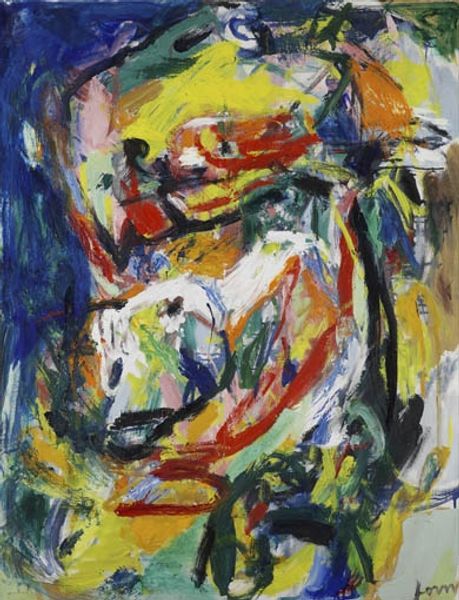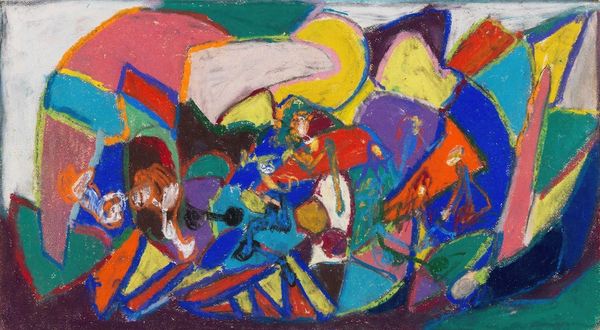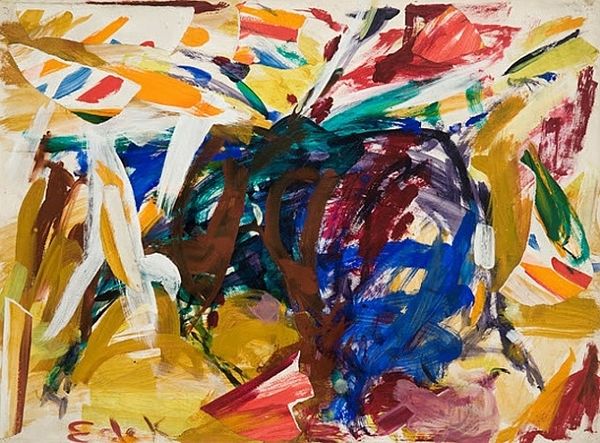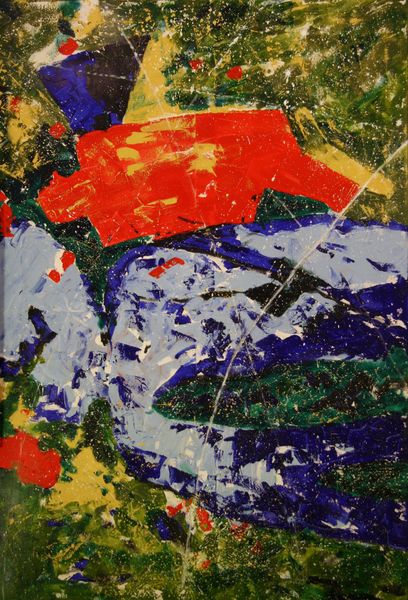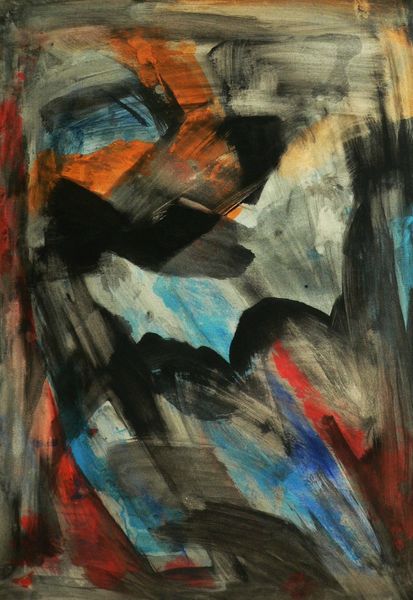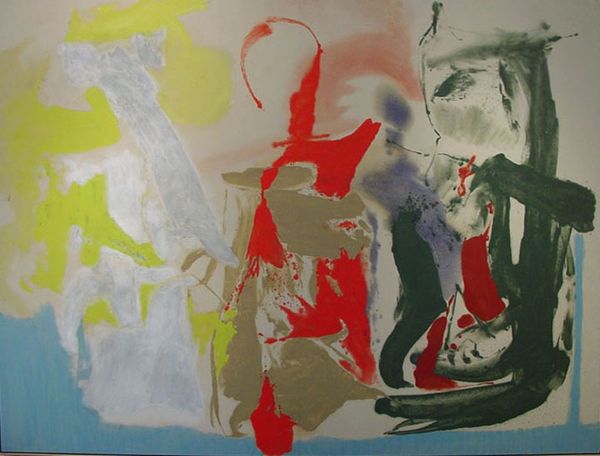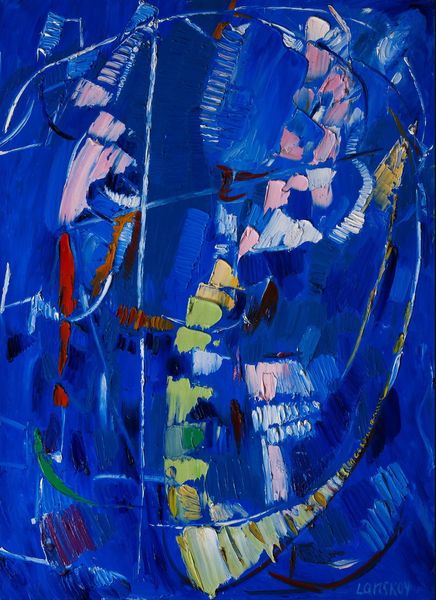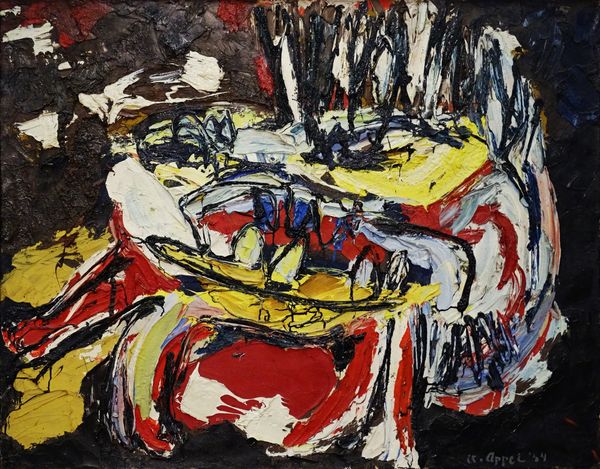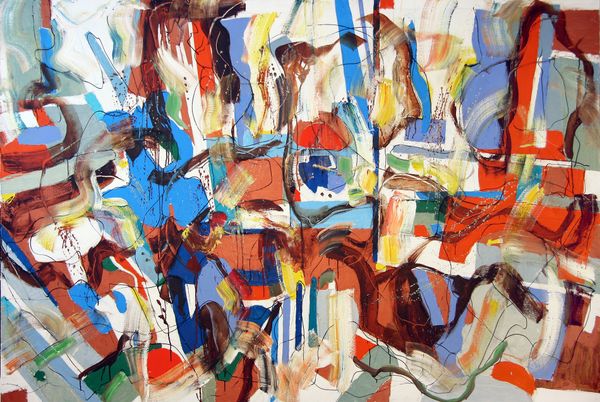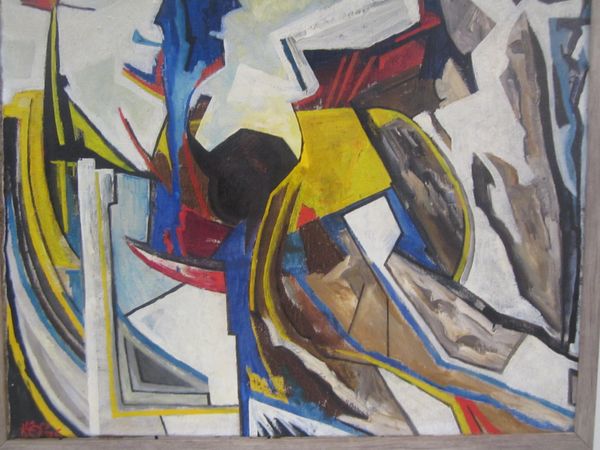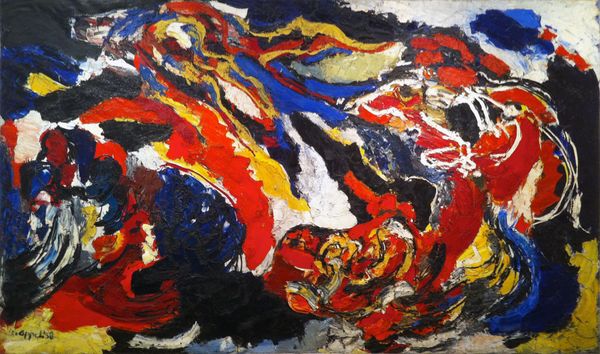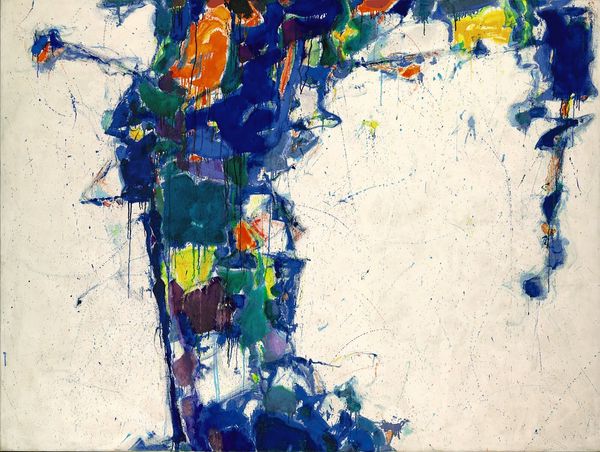
#
cobra
Copyright: Asger Jorn,Fair Use
Curator: The bold colors practically leap off the canvas! I see frantic energy. Editor: Indeed. We're looking at Asger Jorn's "Le bon sauvage" from 1969, made with acrylic paint. It definitely has that raw, immediate quality. Curator: Immediate is right. The brushwork seems so gestural, almost violent in its application. What kind of societal commentary was he channeling when creating this piece? Editor: Well, Jorn was involved with the Situationist International, which was highly critical of consumer culture and the spectacle of modern life. The title "Le bon sauvage", which translates to "the noble savage," ironically comments on this romanticized figure. Jorn challenges that notion using jarring imagery. It reminds us how art itself can function as a rebellious artifact. Curator: Absolutely. Look at how the blue areas feel almost suffocating, contrasted with the vibrant yellows. And that abstracted human figure…is it trapped? Emerging? The materials themselves—thick acrylics—speak to a kind of plastic artificiality. There is something almost sculptural in the use of paint here. Editor: It really reflects the anxieties of the late 60s – questioning societal norms and ideals. Think about how this art challenges institutional authority by democratizing visual experiences for the common individual. Curator: He’s disrupting our comfortable expectations with his focus on method! It pushes the viewer to analyze societal norms rather than blindly consume its image. Editor: And yet, despite its angst, it’s strangely captivating. It is a strong testament to the role art plays in unsettling comfortable cultural assumptions. Curator: True, the sheer materiality – the impasto and the intense palette – it’s confrontational, yet honest. Editor: I leave appreciating art that provokes, that makes one pause and reassess. Curator: Exactly. And to see it through a materialist's perspective really grounds it in production.
Comments
No comments
Be the first to comment and join the conversation on the ultimate creative platform.
